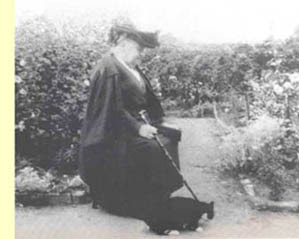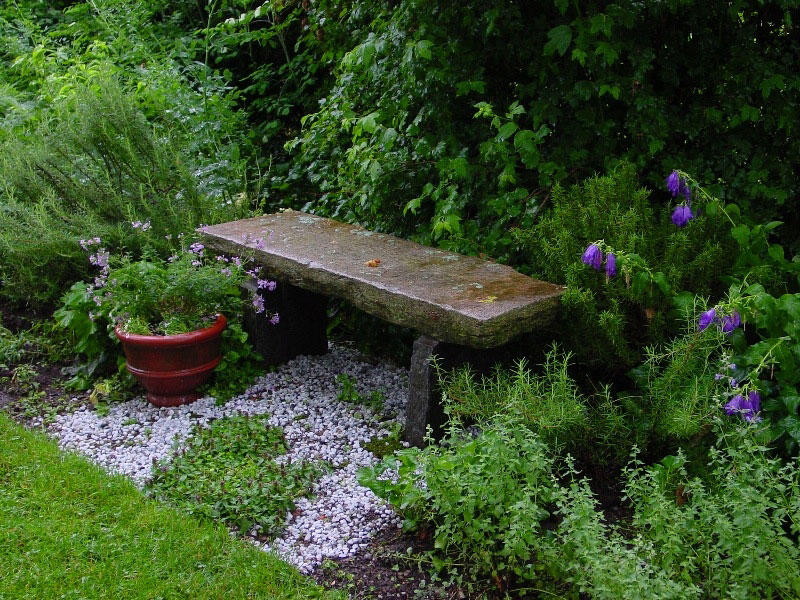| Gertrude Jekyll |  |
 |
 |
|
||
http://www.gertrudejekyll.co.uk/
Gertrude Jekyll
a biography from the Garden and Landscape Guide
Born - Died : 1843 - 1932
Jekyll was an artist, craftswoman, writer and gardener. As a girl, Gertrude Jekyll lived at Bramley House, near Guildford. Her own house was built nearby, at Munstead Wood. Edwin Lutyens was the architect. Gertrude Jekyll and Edwin Lutyens later worked together on other gardens and had perhaps the most famous partnership in English garden history. Many commentators state that Lutyens designed the garden and Jekyll designed the planting. Given their respective ages, and Jekyll's natural authority, it seems more likely that Gertrude Jekyll conceived the garden design and her young assistant worked up the details. A chapter from Jekyll on garden design is on the CD.
Gertrude Jekyll a comprehensive site on Gertrude Jekyll's life and work

Gertrude Jekyll (/?d?i?k?l/ JEE-k?l; 29 November 1843—8 December 1932) was an influential British horticulturist, garden designer, artist[1] and writer. She created over 400 gardens in the United Kingdom, Europe and the United States, and wrote over 1,000 articles[1] for magazines such as Country Life and William Robinson's The Garden.[2] Jekyll has been described as "a premier influence in garden design" by English and American gardening enthusiasts.[

Early life
Jekyll was born at 2 Grafton Street, Mayfair, London, the fifth of the seven children of Captain Edward Joseph Hill Jekyll, an officer in the Grenadier Guards, and his wife Julia Hammersley. Her younger brother, the Reverend Walter Jekyll, was a friend of Robert Louis Stevenson, who borrowed the family name for his famous novella Dr Jekyll and Mr Hyde. In 1848 her family left London and moved to Bramley House, Surrey, where she spent her formative years.

Themes
Jekyll was one half of one of the most influential and historical partnerships of the Arts and Crafts movement, thanks to her association with the English architect, Sir Edwin Lutyens, for whose projects she created numerous landscapes, and who designed her home Munstead Wood, near Godalming in Surrey.[3] (In 1900, Lutyens and Jekyll's brother Herbert designed the British Pavilion for the Paris Exposition.)
Jekyll is remembered for her outstanding designs and subtle, painterly approach to the arrangement of the gardens she created, particularly her "hardy flower borders".[4] Her work is known for its radiant colour and the brush-like strokes of her plantings; it is suggested by some that the Impressionistic-style schemes may have been due to Jekyll's deteriorating eyesight, which largely put an end to her career as a painter and watercolourist. In works like Colour Schemes for the Flower Garden (reprinted 1988) she put her imprint on modern uses of "warm" and "cool" flower colours in gardens.
Jekyll was one of the first of her profession to take into account the colour, texture, and experience of gardens as the prominent authorities in her designs, and she was a lifelong fan of plants of all genres. Her theory of how to design with colour was influenced by painter J.M.W. Turner and by impressionism, and by the theoretical colour wheel. Later in life, Jekyll collected and contributed a vast array of plants solely for the purpose of preservation to numerous institutions across Britain. This pure passion for gardening was started at South Kensington School of Art,[5] where she fell in love with the creative art of planting, and even more specifically, gardening. At the time of her death, she had designed over 400 gardens in Britain, Europe and a few in North America. Jekyll was also known for her prolific writing. She penned over fifteen books, ranging from Wood and Garden and her most famous book Colour in the Flower Garden, to memoirs of her youth. Jekyll did not want to limit her influence to teaching the practice of gardening, but to take it a step further to the quiet study of gardening and the plants themselves.[6] Her concern that plants should be displayed to best effect even when cut for the house, led her to design her own range of glass flower vases.[7]
Jekyll later returned to her childhood home in the village of Bramley, Surrey to design a garden in Snowdenham Lane called Millmead. She was also interested in traditional cottage furnishings and rural crafts, and concerned that they were disappearing. Her book Old West Surrey (1904) records many aspects of 19th-century country life, with over 300 photographs taken by Jekyll.
-
Jekyll's restored long border at Upton Grey Manor House, Hampshire
Upton Grey Manor House[edit]

The "Gertrude Jekyll's Garden" is an early 20th-century garden surrounding the Manor House at Upton Grey in the English county of Hampshire. The coordinates for the location are
51°13′53″N 1°00′05″W? / ?51.231275°N 1.001501°W.
Gertrude Jekyll drew plans for a four and a half acre garden at the Manor House in Upton Grey in 1907. On this site she drew up one of her most picturesque gardens. It includes many features of a typical Jekyll garden but is much smaller scale than the majority of her other commissions.
To the west of the house is the Wild garden. Some of Jekyll's original drifts of daffodils remain at the end of the Wild Garden, still in the drifts she designed.
To the east of the house stands there is the formal garden. Here there are no curved lines, Jekyll designed a Rose Lawn and typical herbaceous borders whose colours run in drifts from cool to hot and the return to cool again. These, with the tennis and bowling lawns are enclosed in yew hedging.
Outside the hedging lies the nuttery, orchard, kitchen garden, stable cottage and cottage beds.
The whole of the garden has been faithfully restored to the many plans and plants that Jekyll prescribed. The garden fell into disrepair and was only restored in 1986. It is visitable by appointment only.
Awards
Jekyll was awarded the Veitch Memorial Medal and the Victoria Medal of Honour from the Royal Horticultural Society.[8]
Death
Jekyll is buried in the churchyard of Busbridge Church, formerly known as St. John the Baptist, Busbridge, Godalming, next to her brother and sister-in-law, Sir Herbert Jekyll, KCMG and Lady Agnes Jekyll, DBE. The monument was designed by Sir Edwin Lutyens.
wiki






 WikiMiniAtlas
WikiMiniAtlas







